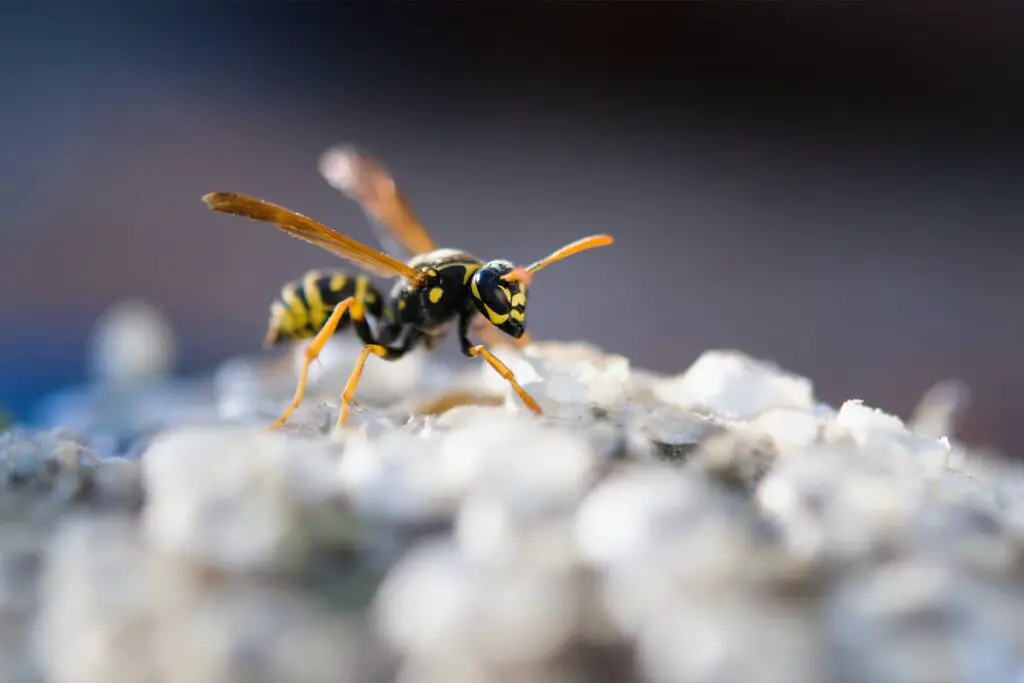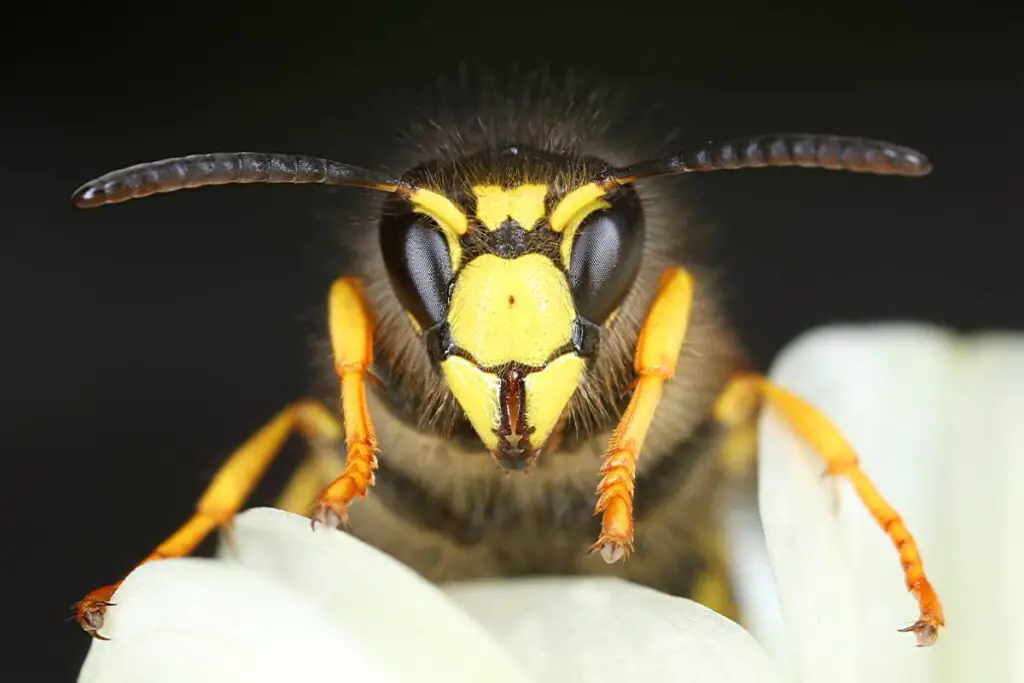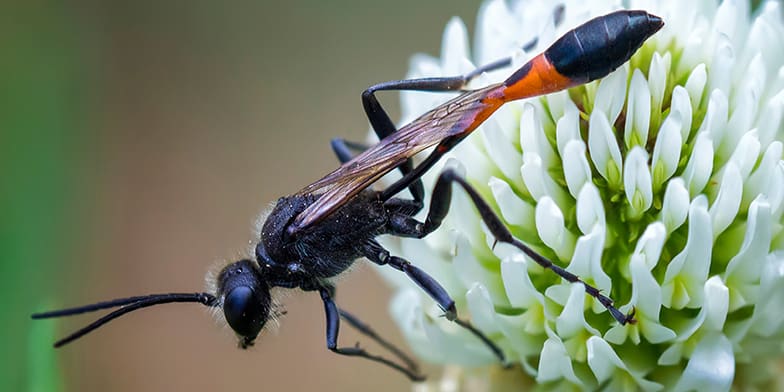
If spiders will sometimes eat wasps, and wasps will sometimes eat spiders, then what do spider wasps eat? It almost sounds like a riddle, doesn’t it? Luckily, the answer isn’t so difficult to find.
Spider wasps eat nectar, a variety of plants, and fruit juices. As larvae they will feed on a living spider, paralyzed by their mother. They will slowly consume the body of the spider, leaving the vital organs until last to make the most of their meal, as they go through their final metamorphosis into an adult.
There is a fascinating array of spider wasp species, and each have both their favorite spiders and plants they enjoy. In this article we’re going to look at some of the more common species, so if you’re curious about the spider wasps you have seen around your home, I hope this can help!
How Are Spider Wasps Different From Common Wasps?
In spite of the name, the spider wasp isn’t quite the same as the common social wasps you are probably most familiar with.
Categorically, they are both under the Hymenoptera order, but from there they split. The common yellow and black wasp (with their roughly 30,000 varieties) are in the Apocrita suborder, while the spider wasp and its 5,000 species are in the Pompilidae family. This subspecies of “wasp” is actually a hornet, and closely related to the ‘yellow jacket.’
Wasps of all types come in a variety of colors. You are probably familiar with the the cautionary colors of yellow and black, of course, but you’ll also see bright blues, reds, and even iridescent colored wasps. Spider wasps tend to be much darker, tending instead to be either a pure black body, wings, and antennae, a black body with red wings, a black body with yellow wings and legs, or a brown body with amber wings and legs and striped thorax.
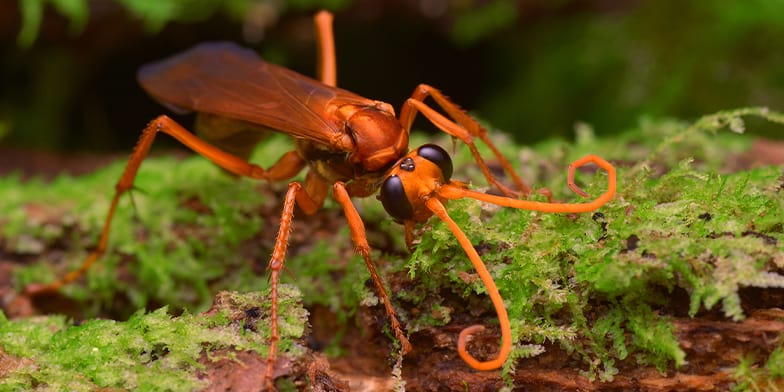
Besides the color, you can tell the difference between a common wasp and a spider wasp by the two pronounced spines on their back legs. Only if you want to get that close, of course, which brings up another great difference.
Unlike their social colony cousins, the spider wasp is not known to attack humans because they are not social. In other words, they don’t have hives and nests with a queen and separate classes of wasps. Instead, they are normally solitary.
Since they don’t have a nest to protect, they are exceedingly unlikely to sting humans unless you happen to corner them somehow and try to actually handle them. This is a really bad idea. Although the males don’t have stingers, the females do. The sting of a spider wasp is categorized as being one of the most painful you can experience.
What Spider Wasps Eat in the Wild
While wasps are primarily carnivorous, spider wasps feed mostly on nectar. Only the female spider wasps will hunt spiders, and not to eat, but to create the perfect nursery for her eggs. She will paralyze the spider and then either dig a hole, create a hole out of mud, or steal another creature’s pre-existing hole, sometimes even the spider’s own home in a nook or cranny.
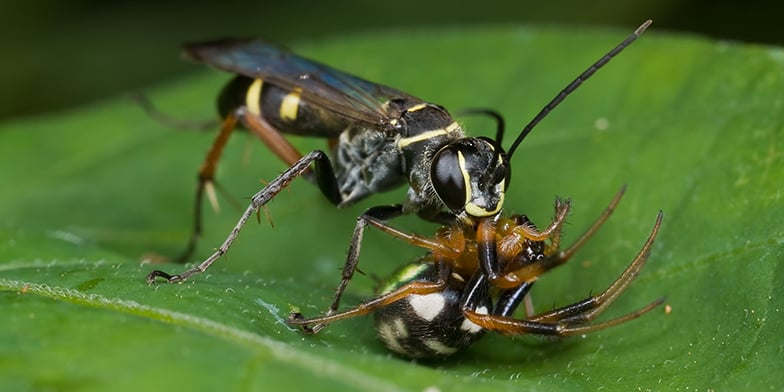
She will have to hunt a spider for each egg she intends to lay, and put them into their own holes. When the eggs hatch, the larvae will eat the spider for nourishment. Typically, the spider will be big enough that it will provide sustenance until the larvae grow and pupate.
In a practical but twisted way, the larvae will leave the vital organs last so that the spider stays alive and keeps the remaining meat fresh. Certain spider wasps will hunt certain spiders, which we will cover later in this article.
Luckily for the spider community, once the larvae of the spider wasp become pupae and they get through the winter, they will become vegetarians and feed only on nectar-filled flowers and fruit juices.
What Spider Wasp Eats Which Spider?
Regardless of which variety of spider wasp, the female of the species will hunt free-living spiders, which are spiders that don’t live in webs. However each spider wasp species will focus its attention on a select variety of spiders. For example, the blue-black spider wasp will only hunt for wolf spiders and funnel-web spiders.
Shared location and habitat is a big factor in why this behaviour occurs.
Blue-Black Spider Wasps (Anoplius Depressipes)
There are 50 different varieties of these particular wasps in the United States. Their favorite spiders are the wolf spider, grass spiders, and other spiders that can be found in suburban gardens, woodlands, grass fields, shrubs-lands, alpine meadows, wet coastal forests, and the like.

Tarantula Hawk Spider Wasps (Pepsis Thisbe)
This variety can be found virtually anywhere tarantulas can be found, with the exception of Europe and Antarctica, but those in the state of Utah around the Grand Canyon will be especially familiar with them. This species has a dark blue body similar to the Anoplius Depressipes, but there is no possibility of confusing the two as this is one of the largest species, almost two inches long. As their name suggests, their favorite spiders are the tarantulas.
Rusty Spider Wasp (Tachypompilus ferrugineus)
This is one of the most easily recognizable spider wasps. It has a reddish-brown body, black or blue iridescent wings, and is almost an inch long. Just like the Tarantula Hawk, it can be found everywhere except in Europe and Antarctica.
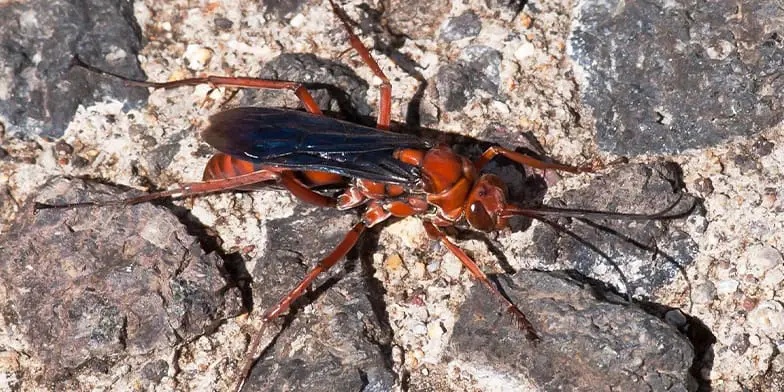
They prefer to feed their young not only wolf spiders but nursery web spiders, fishing spiders, and wandering spiders as well. There are no listed specified flowers that rusty spider wasps prefer, but white blooms do seem to attract them.
Psorthaspis Spider Wasp (Psorthaspis Sanguinea)
This particular species only has 13 varieties within the United States and looks strikingly similar to velvet ants, or as I called them ‘buzzing ants,’ because of their black color and the amber on their back and thorax. The difference is one is very fuzzy and the other is not. As a matter of fact, they are often referred to as velvet ant mimics.
These spider wasps prefer wooded areas almost exclusively and look primarily for trapdoor spiders. As far as I could find, they don’t have a favorite plant.
Auplopus Spider Wasp (Auplopus carbonarius)
This genus is especially numerous and can be found anywhere wooded areas with streams and/or marshes are, particularly in the United Kingdom. They will go after numerous spiders including crab, jumping, nursery web, sac, grass, and ground spiders.
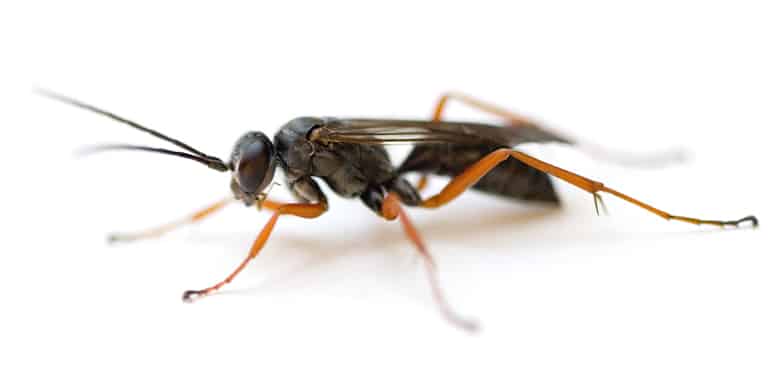
These are also the kinds of spider wasps that create nests with the mud around streams, instead of burrowing or stealing pre-made holes. The Auplopus seems to be particularly fond of the Euphorbiaceae plant, which is commonly known as a blooming Spurge.
Poecilopompilus Spider Wasp
Out of all the subspecies of spider wasps, this one has the most varied color palette. While some are striped with yellow and orange, others are almost entirely black except for a patch of amber on their side, like a badge. Their colors will vary by the region they live in.
What they hunt is also different from their relatives. While wolf spiders and jumping spiders seem to be a staple in the diets of many young spider wasp larvae, the Poecilopompilus catches orb-weaver spiders for their young.
No specific flowers have been named the favorite for the Poecilopompilus, but as orb weaver spiders are often found in gardens and outside buildings, don’t be surprised to come across them.
Conclusion
While positively intimidating, spider wasps are not a threat to humans unless we leave them no choice but to sting. Even then, if you’ve cornered a male the only result will be a foul smell. If you have a spider problem, it might be worth leaving spider wasps to their business, and let them take care of the problem for you.
Resources:
- Spider Wasp Paralyzes Orbweaver – What’s That Bug? (whatsthatbug.com)
- Are Spider Wasps Harmful: Is Spider Wasp Control Necessary (gardeningknowhow.com)
- Spider Wasps | Missouri Department of Conservation (mo.gov)
- 9 Different Types of Wasps (plus how they’re different than bees) – Home Stratosphere
- Entypus Spider Wasps | MDC Teacher Portal (mo.gov)
- Spider Wasp | Animal Database | Fandom
- Spider wasp – Wikipedia
- Spider Wasp Insect Facts – AZ Animals (a-z-animals.com)
- 4 Wasps That Eat Spiders – Fauna Facts
- Wasp – Wikipedia
- Field Guide | Missouri Department of Conservation (mo.gov)
- Grass Spider: Identification, Traits, & Pictures | Beyond The Treat
- Wolf Spiders – Facts, Venom & Habitat Information (animalcorner.org)
- Tarantula Hawk (U.S. National Park Service) (nps.gov)
- Spider Wasps Pompilid Wasps; Pompilids | MDC Teacher Portal (mo.gov)
- Auplopus carbonarius – Wikipedia
- Genus Entypus – BugGuide.Net
- Auplopus carbonarius (Scopoli,1763) | BWARS
Driven by a passion for those tiny creatures that rule our world, we at Bug Domain strive to be your go-to resource for information on insects.


